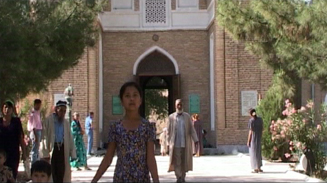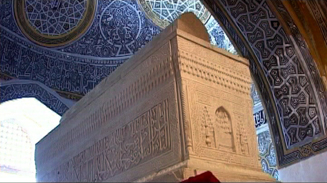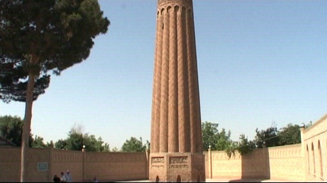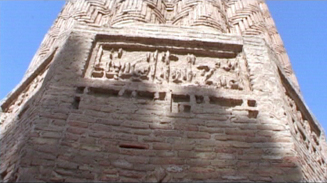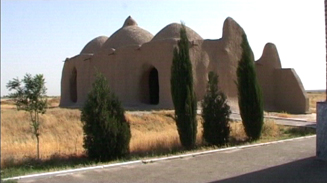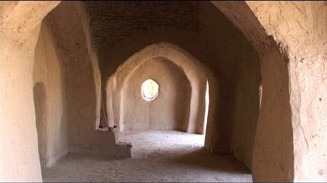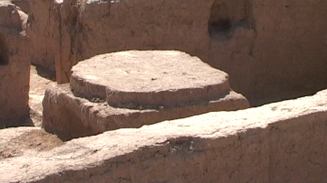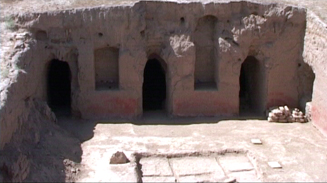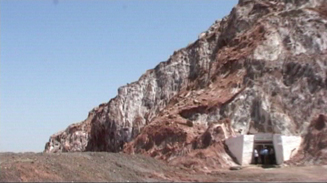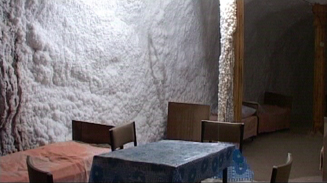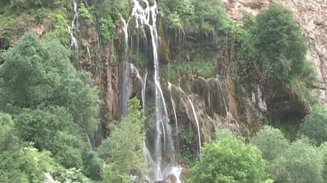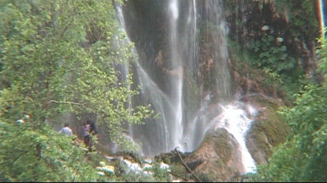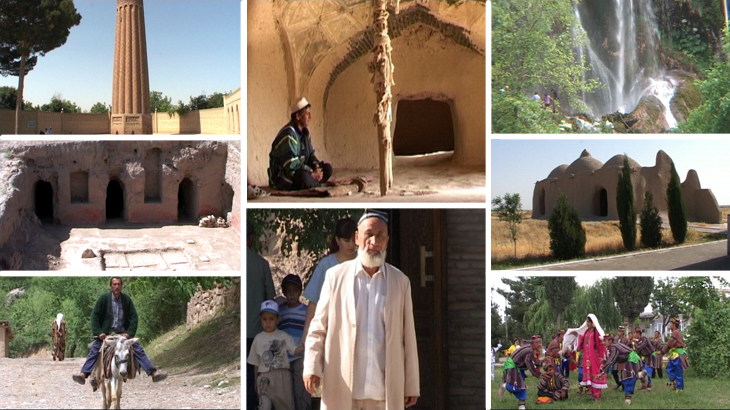| |
Hot and dry climate of the region at all times
forced local
people to offer respectful treatment to those who could
bring water here, using their extraordinary powers.
The rumors say that somebody called Muzrabad-ota had such
magical powers. |
|
|
A brook with a cold and clean water appeared
where his staff
touched the ground.
During those ancient times, the grateful citizens
constructed this mystical construction in honor of
Muzrabad-ota, which until today reminds us of the people
with great powers. |
|
|
Kara-Tepa complex of Buddhist Monasteries is
world-famed.
The archaeologist discovered dozens of cave
monasteries here and one surface monastery here.
The great Kushan Empire united the people with
different beliefs and religions, and rulers
implemented the policy of religious tolerance.
Usually few monks inhabited the cave monasteries.
The cells could accommodate only one or two
dwellers.
These were literate and educated people, who knew
Bactrian and Indian letters.
The life of monks passed in ceremonies and prayers.
Special attention was paid to the maintenance of
cleanness.
It was the maintenance of cleanness that could bring
the monks to the condition of NIRVANA.
Cave galleries together with the yard formed some
kind of frame around the CELLA – a sanctuary with a
statue of Buddha.
|
|
|
This was connected with the ritual detour of the
sanctuary.
Some scientists say that such a gallery setting is
common to the sanctuaries of fire-worshippers, in
their Fire Temples.
Archeological discoveries prove the fact that many
Buddhists came from the environment of
fire-worshippers.
Buddhist monasteries received secular people.
Those people were coming to monastery and leaving
their gifts – water or food.
Later on there were conquerors who came, and they
professed Zoroastrism and were not in favor of
Buddhism.
The monks were gradually leaving their monasteries,
which came to desolation with the time passing by.
Nowadays the archaeological excavations on Kara-Tepe
Complex brings back the history of great empires
that once existed in the territory of Central Asia. |
|
|

